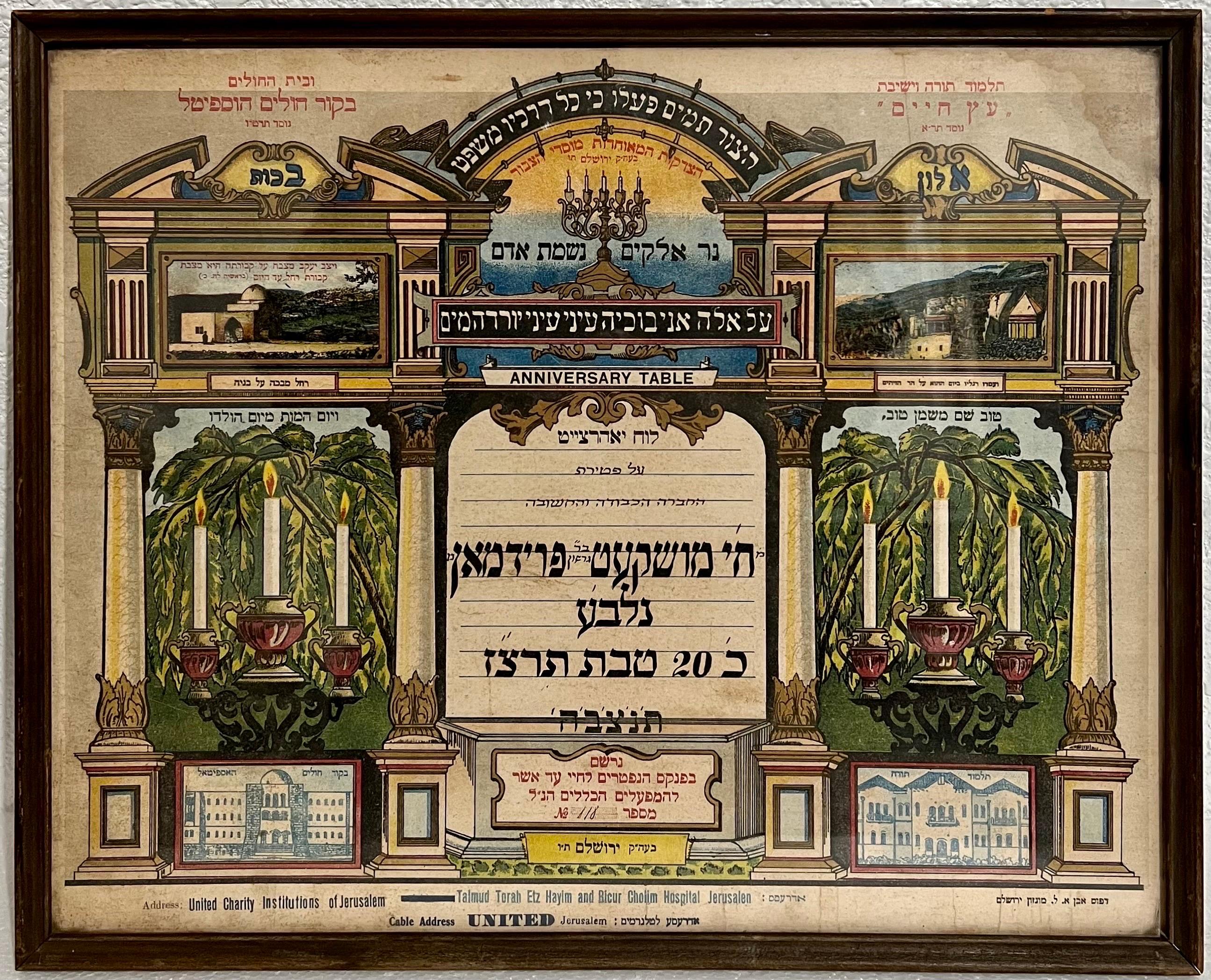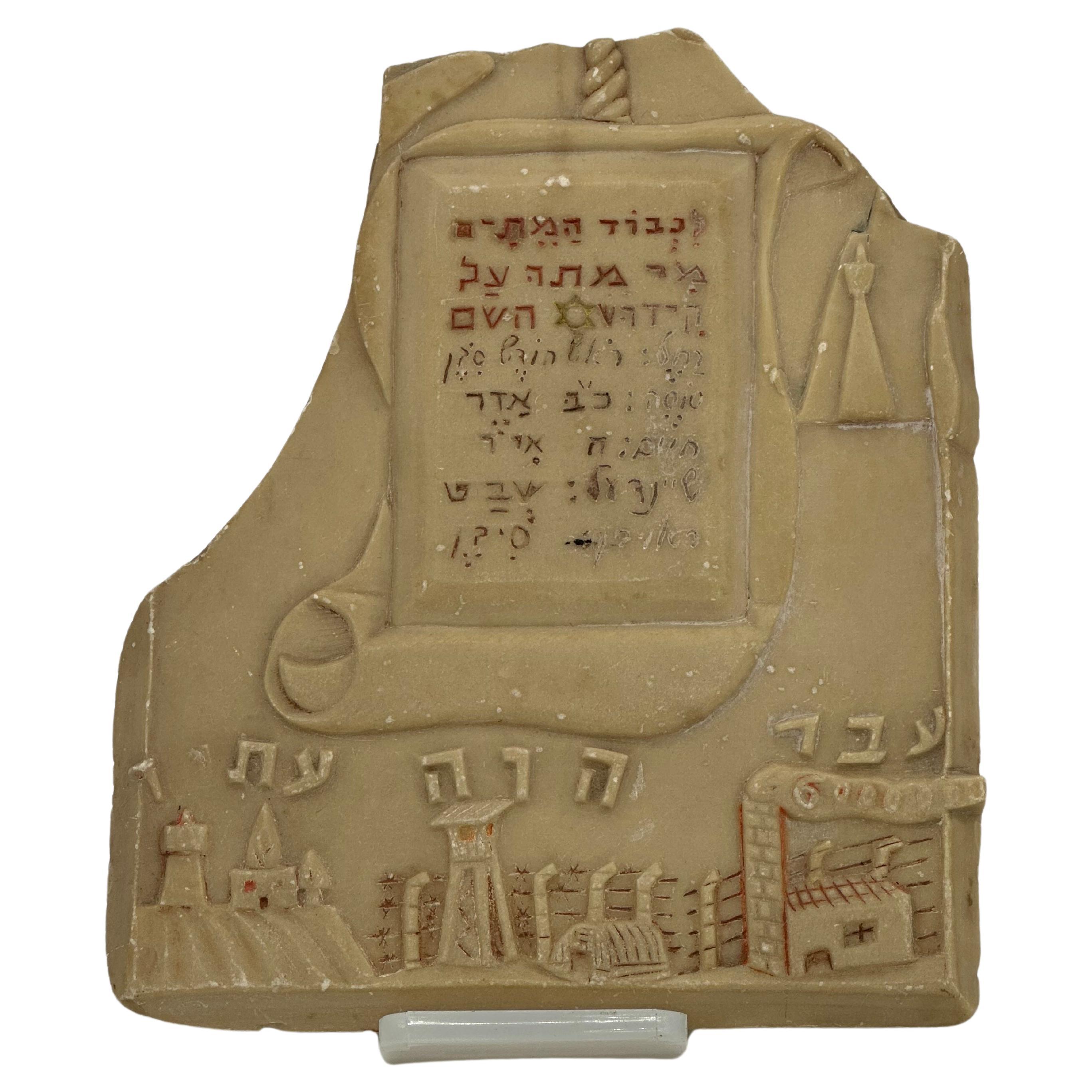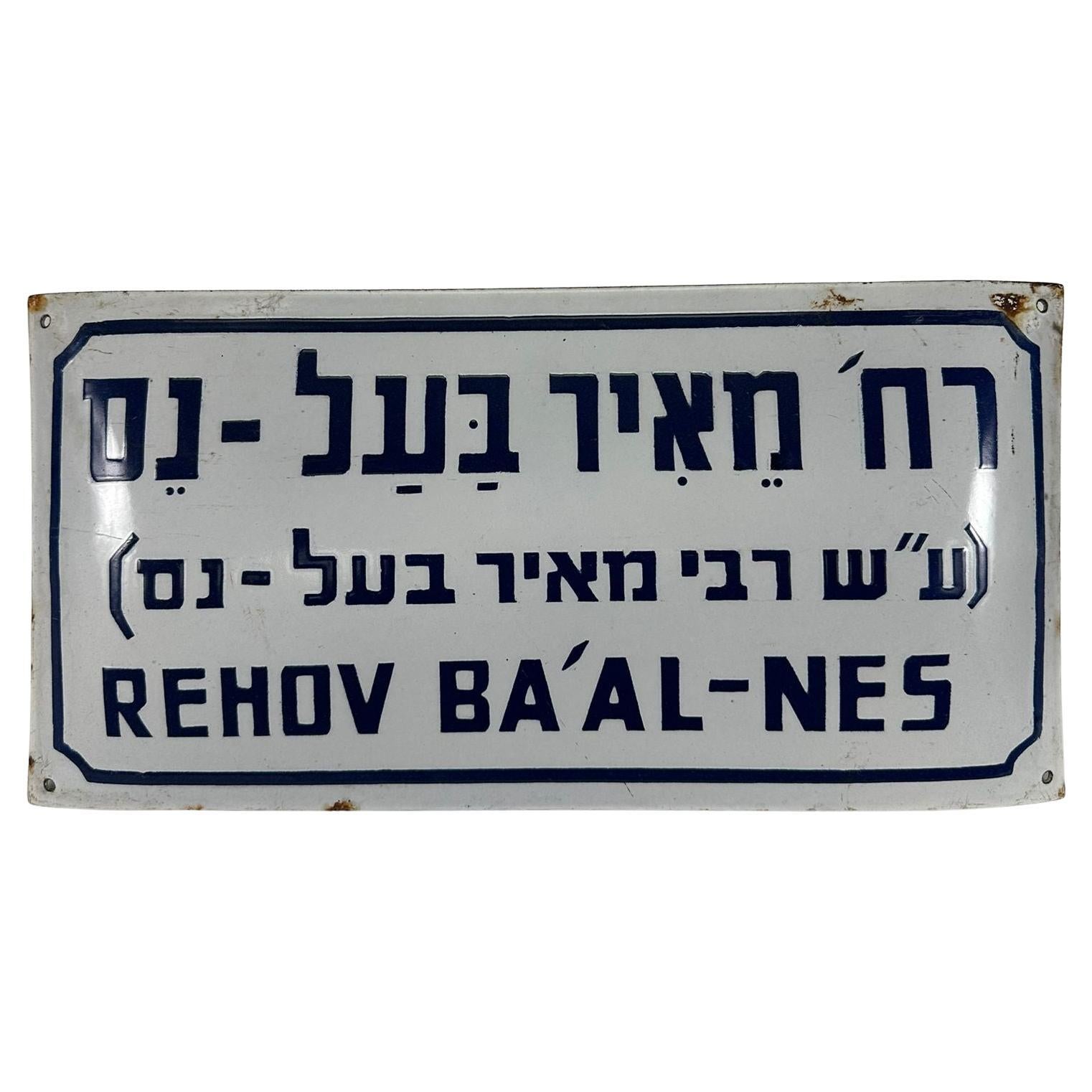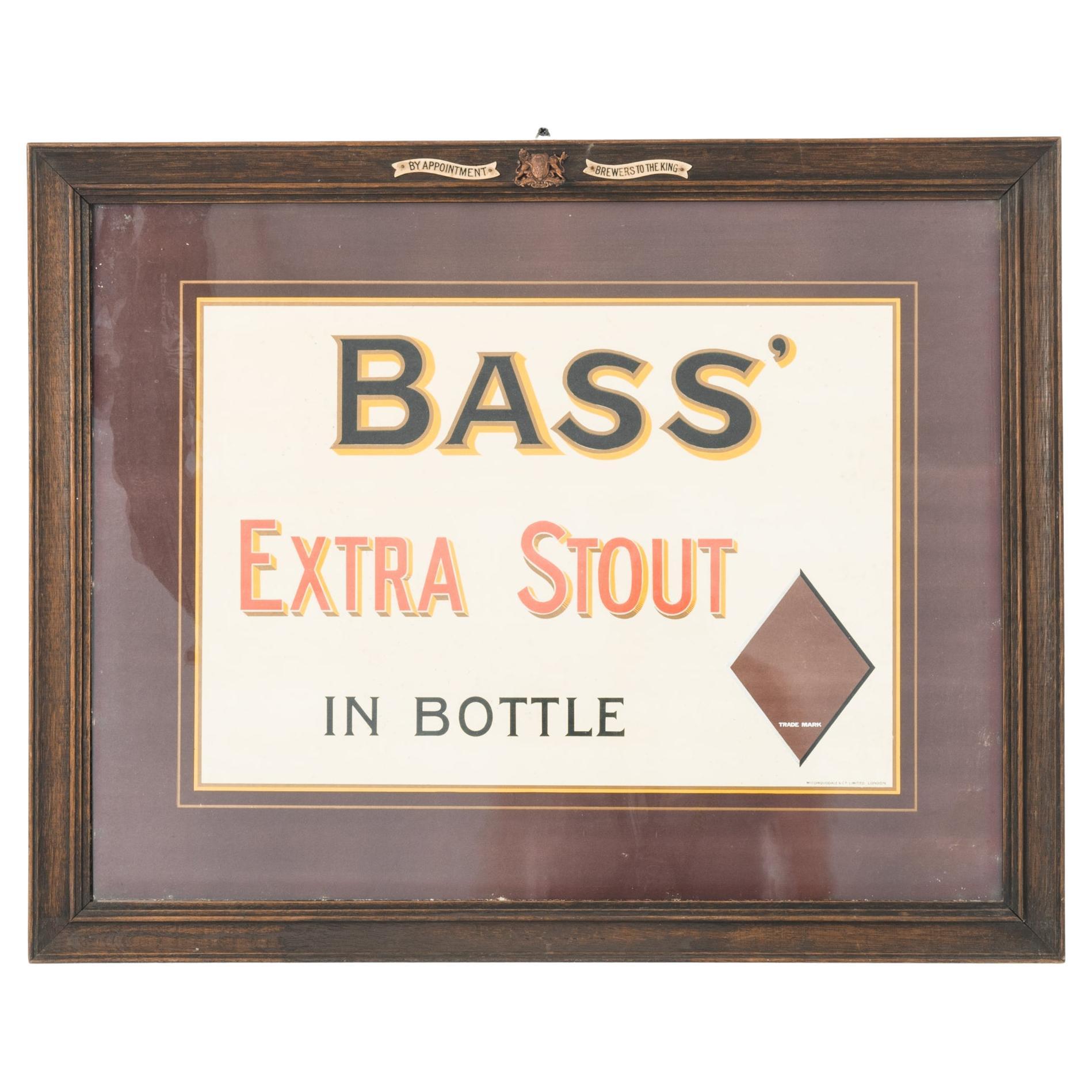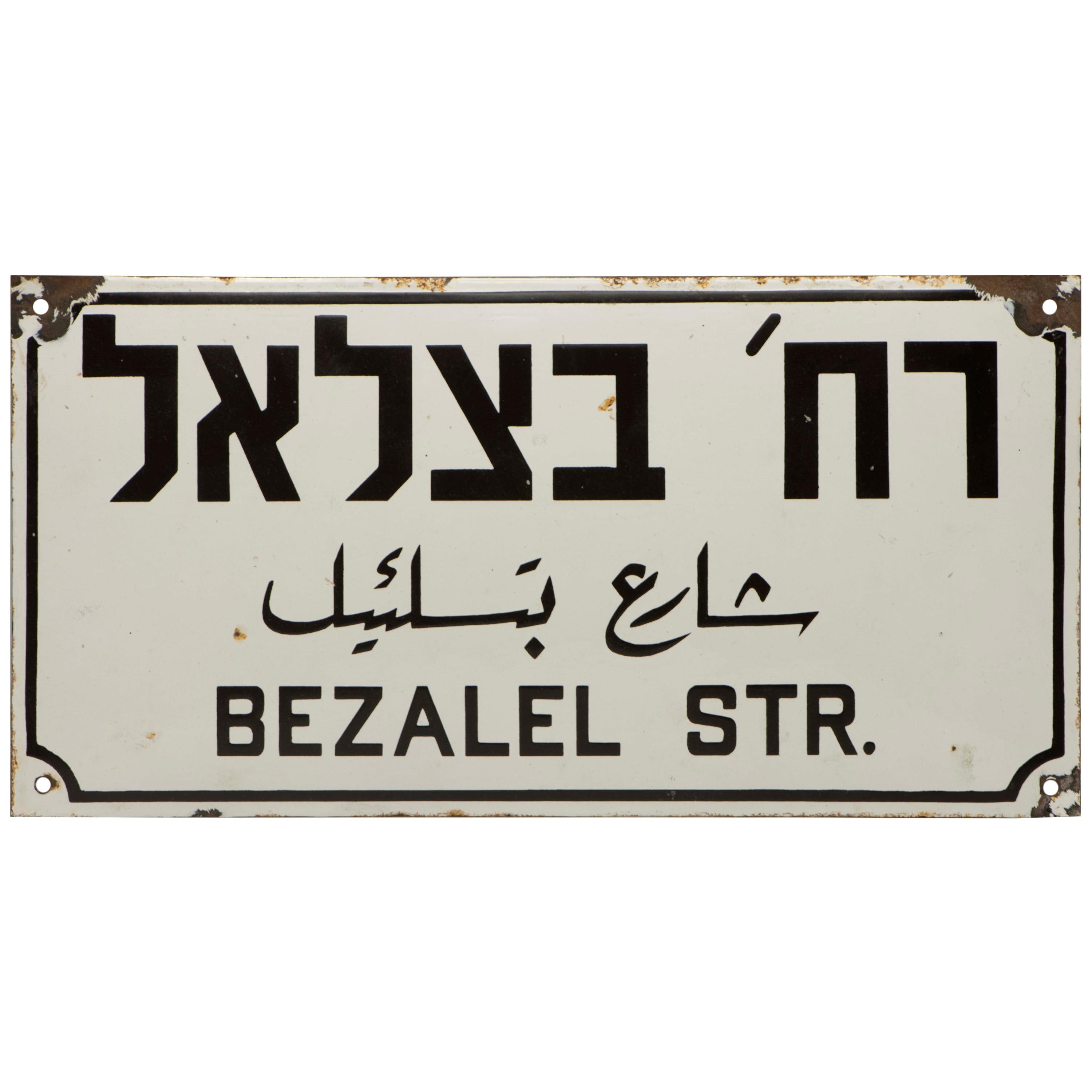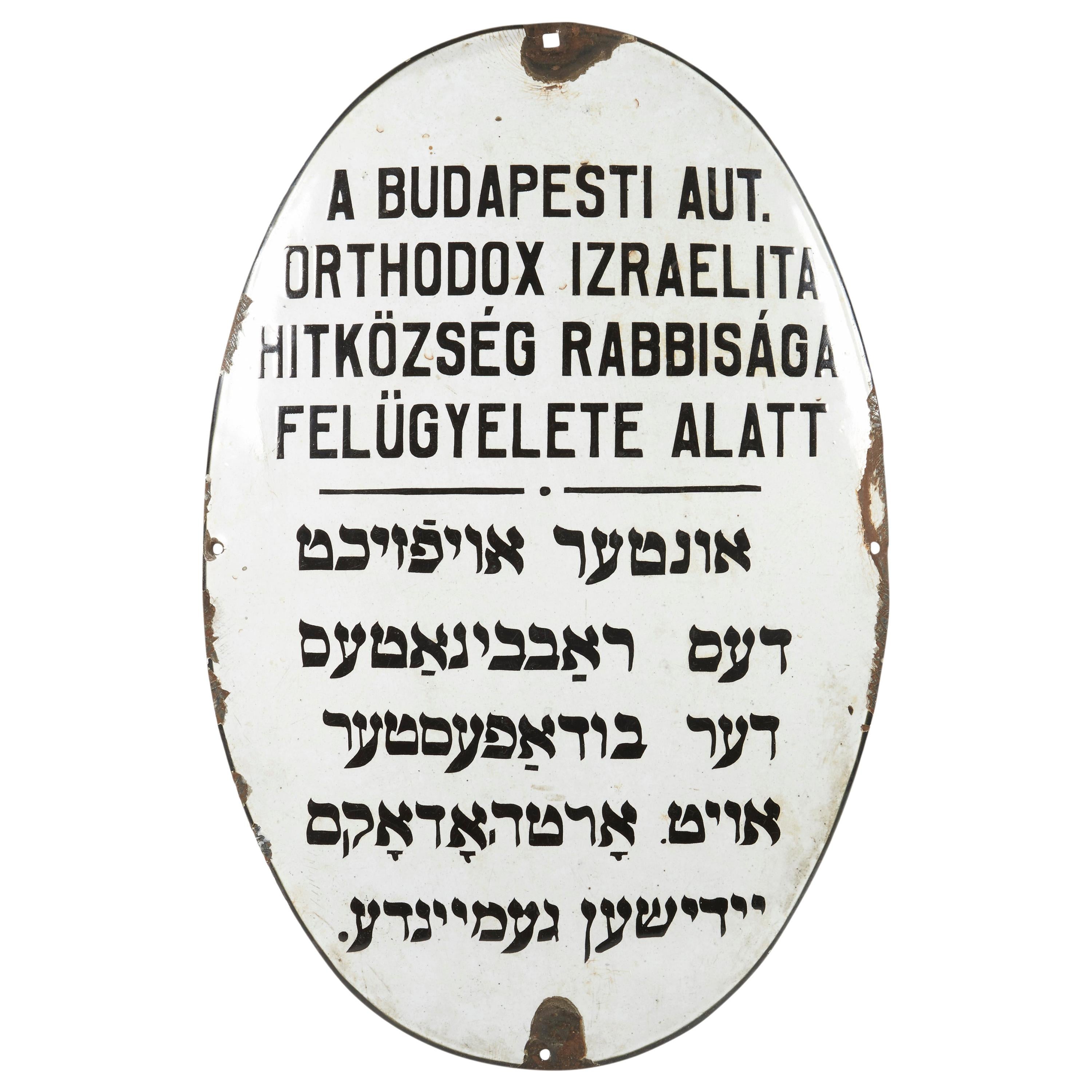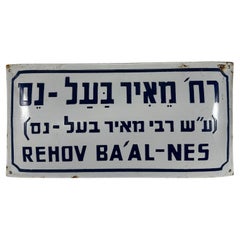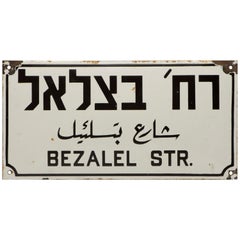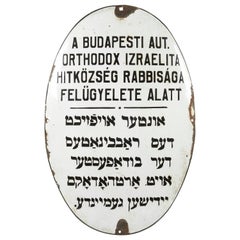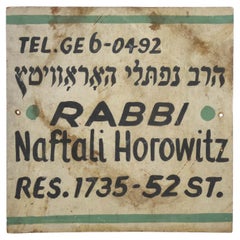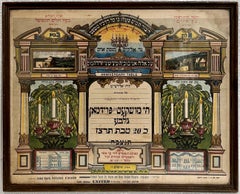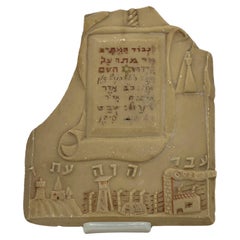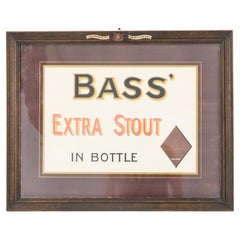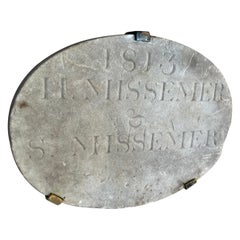Items Similar to A Wooden American Belle Bass Synagogue Memorial Sign, 1945
Want more images or videos?
Request additional images or videos from the seller
1 of 5
A Wooden American Belle Bass Synagogue Memorial Sign, 1945
$560
$70020% Off
£424.92
£531.1420% Off
€485.85
€607.3220% Off
CA$782.17
CA$977.7120% Off
A$869.66
A$1,087.0820% Off
CHF 454.09
CHF 567.6120% Off
MX$10,585.94
MX$13,232.4220% Off
NOK 5,794
NOK 7,242.5020% Off
SEK 5,428.70
SEK 6,785.8820% Off
DKK 3,626.01
DKK 4,532.5120% Off
Shipping
Retrieving quote...The 1stDibs Promise:
Authenticity Guarantee,
Money-Back Guarantee,
24-Hour Cancellation
About the Item
An Interesting Wooden American Belle Bass Synagogue Memorial Sign, made in 1945 in the United States.
The sign is made of wood, stained in a rich, dark color, and smoothly finished, with each letter of the text nailed into the wood. The size of the sign is large enough to be prominently displayed in the Synagogue where the dedication was made. A Star of David is nailed to the top of the dedication followed by " The Belle Bass Memorial" in large, bold letters. The dedication Continues; The privilege of burning the mortgage was accorded to 'Jacob Bass' in loving memory of his wife 'Belle Bass', February 11, 1945".
The privilege of the dedication "Burning the Mortgage" is seldom seen and leaves one to wonder what was the mortgage for?, and what impact that had on the deceased or the dedicatee.
Either way, this memorial sign serves as a poignant reminder of the community's losses and a tribute to the enduring spirit of those commemorated.
- Dimensions:Height: 10.44 in (26.5 cm)Width: 13.98 in (35.5 cm)Depth: 0.99 in (2.5 cm)
- Materials and Techniques:
- Place of Origin:
- Period:
- Date of Manufacture:1945
- Condition:Wear consistent with age and use. Minor losses.
- Seller Location:New York, NY
- Reference Number:1stDibs: LU5281240317752
About the Seller
5.0
Recognized Seller
These prestigious sellers are industry leaders and represent the highest echelon for item quality and design.
Established in 2006
1stDibs seller since 2020
130 sales on 1stDibs
Typical response time: 1 to 2 days
- ShippingRetrieving quote...Shipping from: Pomona, NY
- Return Policy
Authenticity Guarantee
In the unlikely event there’s an issue with an item’s authenticity, contact us within 1 year for a full refund. DetailsMoney-Back Guarantee
If your item is not as described, is damaged in transit, or does not arrive, contact us within 7 days for a full refund. Details24-Hour Cancellation
You have a 24-hour grace period in which to reconsider your purchase, with no questions asked.Vetted Professional Sellers
Our world-class sellers must adhere to strict standards for service and quality, maintaining the integrity of our listings.Price-Match Guarantee
If you find that a seller listed the same item for a lower price elsewhere, we’ll match it.Trusted Global Delivery
Our best-in-class carrier network provides specialized shipping options worldwide, including custom delivery.More From This Seller
View AllIsraeli Enamel on Iron Street Sign: Rehov Ba'al-Nes (1948)
Located in New York, NY
This enamel-on-iron street sign, produced in Israel in 1948, bears the name "Rehov Ba'al-Nes" in Hebrew (רח' מאיר בעל-נס) and transliterated into Latin script as "Rehov Ba'al-Nes." T...
Category
Mid-20th Century Israeli Historical Memorabilia
Materials
Enamel, Iron
Early 20th Century Israeli Iron and Enamel Street Sign
Located in New York, NY
Three languages iron and enamel street sign, circa 1920.
The sign was made to Honor Bezalel who was the chief artisan of the Tabernacle and was in charge of building the Ark of the Covenant...
Category
Early 20th Century Historical Memorabilia
Materials
Enamel, Iron
$2,571 Sale Price
20% Off
Early 20th Century Hungarian Enamel Kosher Butcher Shop Sign
Located in New York, NY
Heavy and massive enamel Kosher butcher shop sign, Budapest, Hungary, circa 1900.
White and black enamel over iron, inscribed in Hebrew and in Hungar...
Category
Early 20th Century Hungarian Architectural Elements
Materials
Enamel, Iron
$6,338 Sale Price
34% Off
An Early 20th Century Sign for Rav Naftali Horowitz , Boro Park, New York
Located in New York, NY
An early 20th-century sign for Rav Naftali Horowitz in Boro Park, New York for the diverse Jewish population who emigrated to New York in that period.
Painted in green, black, and o...
Category
Early 20th Century American Historical Memorabilia
Materials
Hardwood
$1,200 Sale Price
20% Off
A Kollel America Charity Container, New York Circa 1930
Located in New York, NY
A Kollel America Tiferet Jerusalem Charity Container from New York circa 1930 is tied to the charitable activities of Jewish immigrant communities in America raising donations for ca...
Category
Early 20th Century American Religious Items
Materials
Tin
$720 Sale Price
20% Off
An American Arts & Crafts Torah Shield, Circa 1910
Located in New York, NY
This American Arts & Crafts Torah shield from circa 1910, is a unique piece and is rare and valuable, both for its artistic merit and its cultural significance.
The American Arts & ...
Category
Vintage 1910s American Arts and Crafts Religious Items
Materials
Silver Plate
$3,040 Sale Price
20% Off
You May Also Like
Rare Palestine Antique Hebrew Judaica Yahrzeit Synagogue Sign Memorial Plaque
Located in Surfside, FL
Circa 1890-1920. This Neoclassical, Judaic, Egyptian revival, Orientalist Mizrach sign, was produced in British Mandate Palestine by the chromolithograph process at the beginning of the 20th century. It pictures vignettes of holy places. with a hand written memorial. It was for the Tzedakah charity fund for the century-old institutions in Jerusalem: The great "Torah Center Etz Chaim"; a Free Kitchen for poor children and orphans; the famous Bikur Cholim Hospital with its dispensaries and clinics and the only Home for Incurable Invalids in Eretz Israel. They also worked with Arthur Szyk and Alfred Salzmann.. The A.L. Monsohn Lithographic Press (Monzon Press, Monson Press, דפוס אבן א"ל מאנזאהן, דפוס מונזון) was established in Jerusalem in 1892 by Abraham-Leib (or Avrom-Leyb) Monsohn II (Jerusalem, c.1871-1930) and his brother Moshe-Mordechai (Meyshe-Mordkhe). Sponsored by members of the Hamburger family, the brothers had been sent to Frankfurt, Germany in 1890 to study lithography. Upon returning to Jerusalem in 1892 with a hand press, they established the A.L. Monsohn Lithographic Press in the Old City of Jerusalem. According to the Information Center for Israeli Art A.L. Monsohn "created complex decorations for documents and oriental calendars that combined the tradition of Jewish art with modern printing techniques such as photographic lithography, raised printing and gilding."
The founders of the Monsohn press produced Jewish-themed color postcards, greeting cards, Jewish National Fund stamps, and maps documenting the evolution of the Jewish settlement in Eretz Israel in the nineteenth-twentieth centuries; religious material such as decorative plaques for synagogues, portraits of Old Yishuv rabbis such as Shmuel Salant, Mizrah posters indicating the direction of prayer for synagogues, memorial posters, and posters for Sukkot booths; color frontispieces for books such as Pentateuch volumes and the early song collections of Abraham Zvi Idelsohn (e.g., Shire Zion, Jerusalem 1908); artistic wedding invitations; and labels, packaging and advertisements for the pioneering entrepreneurs of Eretz Israel. The texts appearing in the Monsohn products were in several languages: Hebrew, Arabic, Yiddish, English, German (e.g., a c1920 trilingual Hebrew-English-Arabic "Malaria Danger" broadside warning the public of mosquitoes spreading malaria). Many of the brilliantly colored postcards and maps can be seen online as can the artistic invitations to his children's weddings which Monsohn published in the Jerusalem Hebrew press.
For years, the Monsohn (later, Monson/Monzon) Press was considered the best and most innovative in the country—pioneering in such techniques as gold-embossing and offset printing, among others. Early items for tourists included collections of Flowers of the Holy Land (c. 1910–1918)—pressed local flowers accompanied by scenes from the Eretz Israel countryside and relevant verses from the Bible, edited by Jsac Chagise (or Itzhak Haggis), an immigrant from Vitebsk, and bound in carved olive wood boards. Shortly after World War I Monsohn (now spelled מונזון) used zincography to produce the prints included in the Hebrew Gannenu educational booklets for young children illustrated by Ze'ev Raban of the Bezalel Academy of Art and Design and printed in Jerusalem by Hayim Refael Hakohen (vol. 1, 1919; vols. 2–3, 1920). In 1934 Monsohn moved into the new, western part of Jerusalem, in a shop with four presses and 30 workers, including Abraham-Leib's sons, David, Yosef, Moshe and Shimon, and his daughter Raytse's husband, Abraham Barmacz. The concern did business with all sectors of the city's population, including Arabs, for whom they printed in Arabic. Among their clients were members of the Ginio, Havilio, and Elite families, and Shemen, Dubek, and other renowned national brands, manufacturing products such as wine, candies, oil, and cigarettes. They also printed movie and travel posters, and government posters, postcards and documents, hotel luggage labels...
Category
Early 20th Century Aesthetic Movement More Art
Materials
Lithograph
Historic Rare Carved memorial plaque made by Jewish internee in Cyprus, 1948
Located in Tel Aviv - Jaffa, IL
super rare and historic example of Cyprus stone carving, made by jewish holocaust surviver that was Detained at the Internment camps in Cyprus, just 3 years after the holocaust. this piece is very unusual, most of this carvings shows us aspects of living in the Refugee camps or zionist views of israel, sometimes they even made judaica objects like menorahs Or Candlesticks, but its rare to find memorial plaques such as the example in front of us, the plaques was Damaged In the way to israel and two pieces from the upper section were broken off, the middle part of the Plaque shows a Scroll shaped memorial plaque with the inscription : "for the dead who died on the name of god" In red color, the middle has a yellow star carved and painted, just like the yellow star jewish...
Category
Vintage 1940s Cypriot Antiquities
Materials
Soapstone
1950s British Sign with Wooden Frame
Located in High Point, NC
Step back in time with this authentic 1950s British "Bass' Extra Stout" sign, a perfect addition for collectors of vintage memorabilia. This striking sign, produced by McCorquodale &...
Category
Mid-20th Century British Prints
Materials
Wood
American Folk Art Carved Marble Oval Building Marker, Dated 1813
Located in Lambertville, NJ
A haunting and unusual American carved marble building marker, probable New England origin circa 1813. The names inscribed are H. Missemer & S. Missemer. It...
Category
Antique 1810s American Signs
Materials
Marble, Wrought Iron
19th Century Rustic English Private Land Owners Trespassers Sign
Located in Godshill, Isle of Wight
19th century rustic private land owners trespassers sign
This sign is made in elm with metal lettering set in relief it says
Notice
No road
Trespassers Wil
Be prosecuted
By...
Category
Antique Mid-19th Century Rustic Signs
Materials
Wood
Vintage Shop Sign with Gilt Calligraphy on Lacquered Ground
Located in Yonkers, NY
A vintage Chinese horizontal shop sign from the mid 20th century with lacquered finish, carved and gilt calligraphy. Created in China during the midcentury period, this horizontal shop sign features an outer molded frame surrounding a beautiful calligraphic text. Six words, carefully carved and gilded, stand out on a dark reddish brown lacquered ground. The sign has been fitted with two ring pulls on its upper edge to allow it to be hung on a wall. With its clean lines and gilded calligraphy, this vintage Chinese shop sign...
Category
Mid-20th Century Chinese Architectural Elements
Materials
Wood
More Ways To Browse
Sign Letters
Used Synagogue Furniture
Wood Cash Register
Antebellum Furniture
Antique Chaps
Antique Glass Christmas Ornaments
Antique Railway Memorabilia
Civil War Cannon
George Washington Plaque
Nyc Memorabilia
13 Star American Flags
Vintage Air Force Memorabilia
Antique Coal Mining
Antique Fire Hose
Antique Masonic Collectables
Marshall Plan
Vending Machine
Vintage Wooden Sleds
